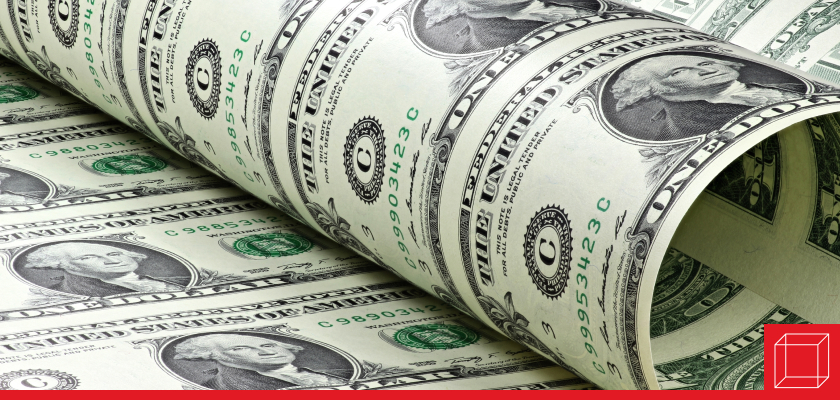How the Federal Reserve Affects the Economy | July 2022
Today’s rapid inflation can be seen everywhere, from airfare to rent. The main avenue for combating price increases is the Federal Reserve policy, which can be used to increase interest rates.

Consumer prices are climbing, fast. Today’s rapid inflation can be seen everywhere, from airfare to rent. The main avenue for combating price increases is Federal Reserve policy, which can be used to increase interest rates. The Fed addresses the demand side of the supply and demand relationship.
A high fed-funds rate (an overnight rate on lending between banks) slows down the broader economy, creating a chain reaction. With higher interest rates, mortgages become more costly, businesses borrow less, business growth slows, price increases slow, spending is restrained, fewer workers are hired, and paycheck growth slows. This chain reaction also affects credit cards, savings accounts, car loans, and corporate debt.
What is the Fed?
The Federal Reserve Board, commonly referred to as “the Fed,” is the guardian of the American financial system. It is an independent agency of the federal government that regulates the nation’s banking and financial industry. The Federal Reserve Board is the chief economic policy arm of the United States.
Working with Congress and the president, the Fed tries to create a positive economic environment capable of sustaining low inflation, high levels of employment, a balance in international payments, and long-term economic growth. The Fed has five primary responsibilities:
Conducting monetary policy
Promoting financial system stability
Supervising and regulating financial institutions and activities
Fostering payment and settlement system safety and efficiency
Promoting consumer protection and community development
The Chair of the Board of Governors of the Federal Reserve system (currently Jerome H. Powell) is nominated by the president and confirmed by the senate. The chairperson serves a four-year term beginning in the middle of the president’s term and ending in the middle of the next president’s term and can serve multiple terms. This process is thought to help the Fed maintain its independence from political pressure from the president.
Risk of recession
One challenge of increasing interest rates is that workers’ wages may be affected before price increases slow down. According to Fed officials, unemployment will increase by the end of the year, but inflation will remain elevated. This likely means consumer purchasing power (the money consumers have to purchase goods and services) decreases.
At the same time, rising interest rates have fueled market fears, leading to stock price decreases. Additionally, with a slower housing market, home values could decrease. When the Fed increased interest rates in the 1980s to address rapid inflation, it sparked back-to-back recessions and high unemployment. A recession is characterized by a decline in production, employment, and income.
Powell said at a news conference that the Fed is not trying to start a recession by increasing interest rates but that there are factors that are outside of the Fed’s control, such as fluctuations in commodity prices. “We think that policy is going to need to be restrictive,” Powell said.
Another approach
Critics have asked for a more well-rounded approach to addressing inflation, addressing both supply and demand. For example, the government can support building more affordable housing or ramping up production in various areas of the economy. However, government policies can take a long time to be approved and have an impact.
In contrast, when the Fed announced it would increase interest rates by the largest amount since the 1990s, it had an immediate impact on the economy. The Fed said it expects to raise interest rates further throughout the year. Officials argue that allowing inflation to rapidly increase without taking such action would be far worse. Powell said the Fed must restore price stability. Supporters say this large rate increase shows the Fed’s commitment to combatting inflation while critics say the move hints at a lack of control.
In the Classroom
This article can be used to discuss the Federal Reserve system (Chapter 15: Money and the Financial System).
Discussion Questions
What is the Federal Reserve?
How does increasing interest rates affect the economy?
Describe how the Fed’s approach could contribute to a recession.
This article was developed with the support of Kelsey Reddick for and under the direction of Geoffrey Hirt, O.C. Ferrell, and Linda Ferrell.
Sources
Board of Governors of the Federal Reserve System, "The Fed Explained," https://www.federalreserve.gov/aboutthefed/the-fed-explained.htm
Jeanna Smialek, "The Painful Path to Fight Inflation," The New York Times, June 21, 2022, https://www.nytimes.com/2022/06/21/briefing/inflation-government-wages-jobs.html
Nick Timiraos, "Fed Raises Rates by 0.75 Percentage Point, Largest Increase Since 1994," The Wall Street Journal, June 15, 2022, https://www.wsj.com/articles/fed-raises-rates-by-0-75-percentage-point-largest-increase-since-1994-11655316170



